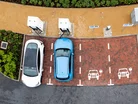EV charging: infrastructure and range anxiety challenges

The technology for electric vehicles has come on leaps and bounds over the past few years leading to a dramatic increase in sales. According to McKinsey & Company, in the US, electric vehicle sales have climbed by more than 40% a year since 2016. By 2035, the largest automotive market will be fully electric.
However, in the same way a traditional car requires fuel, extraction operations, pipelines, transportation, and a vast network of gas stations to run, EVs need their own complex charging infrastructure.
Sadly, the existing infrastructure can’t support the number of charging stations needed in the future, this has led to a number of challenges, including range anxiety.
Many companies are developing home charging solutions as a result, and to empower disabled drivers to make the switch to EVs, infrastructure developers are creating chargers that can be used by all.
Overcoming range anxiety with improved infrastructure and investment
Range anxiety is a challenge crippling the EV industry. Many consumers are nervous about making the switch to electric as they worry about recharging and fear their car won’t have sufficient energy to take them to their planned destination.
Although some associate range anxiety with issues with the vehicles, it is actually the infrastructure, or lack of, that prevents people from having sufficient charge.
To help overcome this, more government investment is needed to help consumers overcome these anxieties. Just this year, the UK government announced it has increased its investment of public funds supporting the development of new electric vehicle charging infrastructure.
The Local Electric Vehicle Infrastructure (LEVI) Fund will provide a total of £450 million of public funds “to facilitate the rollout of larger-scale chargepoint infrastructure projects”, the government said.
Although the U.S. Department of Energy reported that as of April 2022, there were a total of 53,919 EV charging stations and 132,888 EVSE ports in the U.S. and Canada, it also found that these charging stations are not evenly spread across the countries.
But, the Biden-Harris administration plans to change this and catalyse more than US$700mn in private sector commitments to make EV charging more affordable and accessible. This will increase domestic capacity to manufacture more than 250,000 new EV chargers each year, add at least 2,000 good-paying jobs, and make EV charging more affordable, accessible, and equitable.
Siemens and ConnectDER’s EV home charging solution
Research into the average journey shows that typically, in the USA and Europe, 80% of daily driving is done on short distances, with the average commute to work and back in Germany being 32km (similar to the US). Most electric vehicles have a range of 100km so can serve the average car user sufficiently.
For some, home charging solutions are a great option. Users can charge their cars overnight and there is no need for commuters to worry about losing charge on their journey.
Recently, Siemens and ConnectDER announced a partnership to offer a solution that enables EV owners to charge their vehicles by connecting chargers directly through the meter socket.
However, home charging developers need to look at the affordability and accessibility of their solutions if they want the adoption of EVs to pick up.
Many people may not have access to private parking, or may not be home owners so don’t have the authority to install their own charging point, and as a result if e-mobility wants to adapt fully, it’s crucial to focus on making the home and public charging more accessible for the general public that is not homeowners.
The recent announcement from Siemens and ConnectDER is a step in the right direction, as Siemens noted: “By allowing for a simple, 15-minute EV charger install, the technology eliminates the need for complex and prohibitively expensive installations.”
By bypassing a home’s electric service panel, the adapter will save an estimated 60 to 80% of the charger installation cost by avoiding the need for electric panel upgrades.
Ford: accessible charging points for disabled drivers
As we encourage people to shift away from traditional, fuel-guzzling vehicles, it is important the industry meets the needs of all drivers with the infrastructure it offers.
Research from the Research Institute for Disabled Consumers found that 61% of disabled people would consider buying an electric vehicle only if charging was made more accessible.
There are a number of factors infrastructure developers need to consider when making charging points accessible such as the weight of charging cables and the number of trip hazards around the charging point itself. The survey also found that there were issues around the height of connection points for wheelchair users.
To help with this, car manufacturer, Ford, has developed a prototype robot charging station that will enable disabled drivers to stay in the car while charging, or they could leave the car while the robot does all the work.
The technology enables drivers to operate via their smartphone from inside their electric vehicle so do not have to worry about constraints with the infrastructure.


